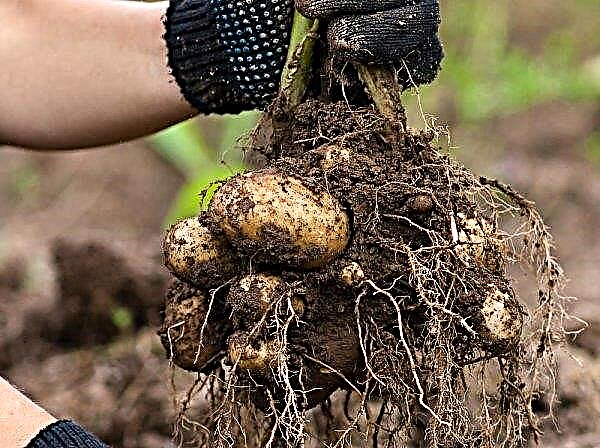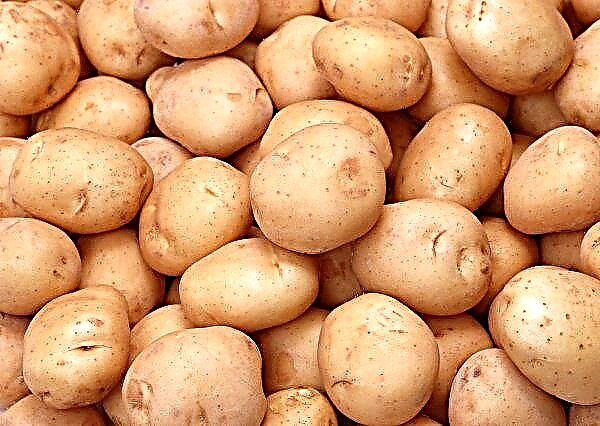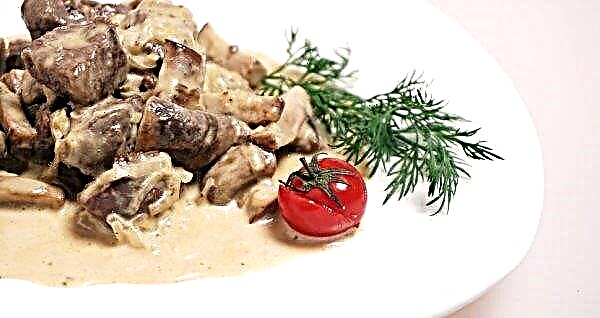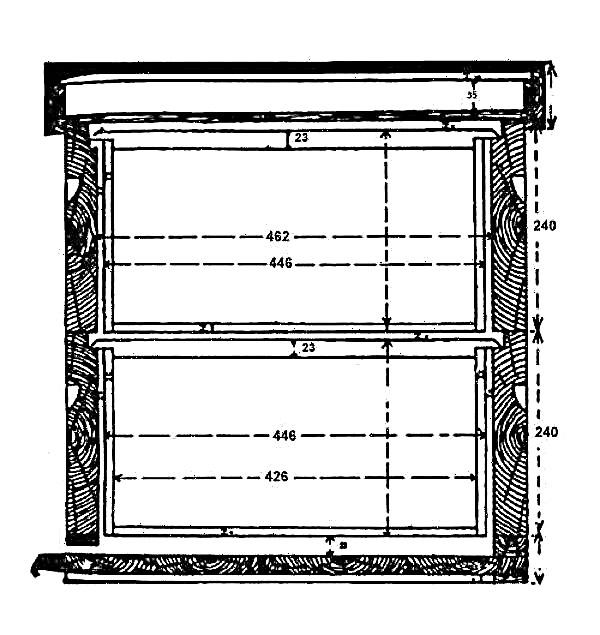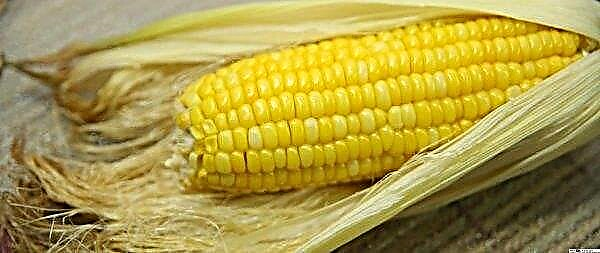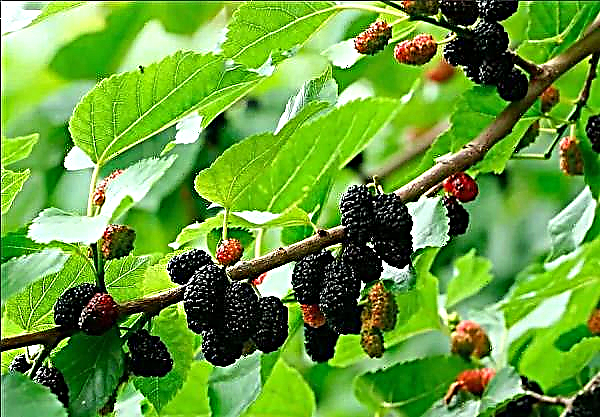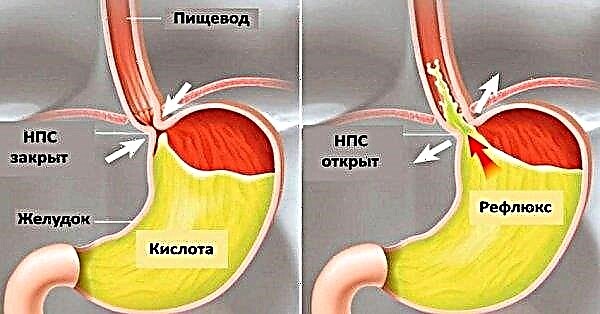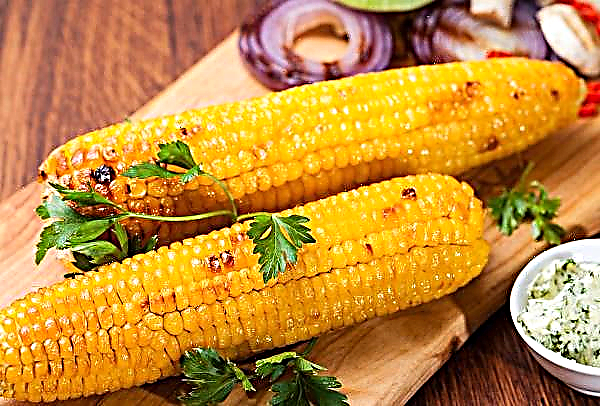Jams are the favorite fruit and berry preserves for the winter of most housewives. The process of preparing preservation is not complicated, but it significantly increases the shelf life of the product. Today we’ll talk about making peach jam for the winter.
Calorie content and nutritional value
The energy value of peach jam per 100 grams:
| Calorie goodies | 258 calories |
| squirrels | 0 g |
| fats | 0 g |
| carbohydrates | 66.8 g |
| alimentary fiber | 0.4 g |
| water | 31 g |

Vitamins and Minerals Contained in Jam:
- vitamin A - 2 mcg;
- beta-carotene - 0.01 mg;
- Vitamin B1 - 0.01 mg;
- Vitamin B2 - 0.02 mg;
- vitamin C - 2 mg;
- Vitamin E - 0.8 mg;
- vitamin PP - 0.4 mg;
- potassium - 163 mg;
- calcium - 9 mg;
- magnesium - 7 mg;
- sodium - 13 mg;
- phosphorus - 15 mg;
- iron - 0.3 mg.
Did you know? Since 1982, in the United States, August has been declared National Peach Month.
Selection and preparation of ingredients
To prepare high-quality jam, you need to choose the right ingredients. Peaches are better to choose yellow, fragrant, ripe, but not overripe and not soft. If you use an overripe fruit, then during the heat treatment it will turn into a homogeneous substance. It is desirable that his pulp is tender. Some hostesses replace peaches with nectarines, but then the jam tastes completely different.

Even if you chose peaches with a smooth skin, without villi, you still need to separate the top cover from the pulp so that it does not spoil the general appearance and taste of the finished dish. It is not advisable to freeze peaches and then make jam from them. Saturation of taste is lost, and the consistency of jam may be different.
Important! Experienced housewives recommend adding citric acid to the jam for better winter storage.
Recipes for peach jam for the winter
You can make dessert in various ways. Someone uses only peach, someone adds other fruits, and someone uses nuts. Here is an example of several popular simple recipes for a dish.
Simple recipe

3 cans of 0.7 L each 180–200 min.
lemon acid
0.5 tsp
Energy value per 100 g:
 Wash the peaches.
Wash the peaches.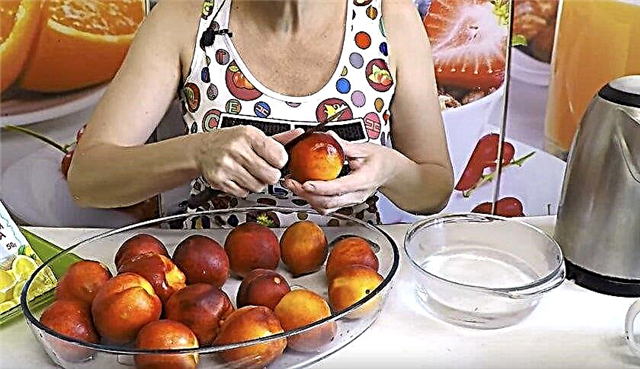 To separate the fruit from the skin, pour hot water into a container and immerse the fruits one at a time for several seconds. Then, using a knife, carefully remove the skin.
To separate the fruit from the skin, pour hot water into a container and immerse the fruits one at a time for several seconds. Then, using a knife, carefully remove the skin. Cut the fruit into medium sized slices. Fold in the pan.
Cut the fruit into medium sized slices. Fold in the pan. Pour sugar, mix and leave for 1–1.5 hours.
Pour sugar, mix and leave for 1–1.5 hours.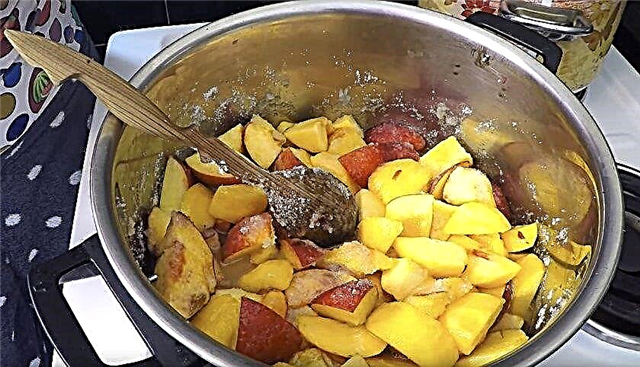 Place the pan over medium heat, add cinnamon and stir the peaches with a wooden spoon. Once the sugar has completely dissolved, boil over high heat.
Place the pan over medium heat, add cinnamon and stir the peaches with a wooden spoon. Once the sugar has completely dissolved, boil over high heat. Leave to cool in a cool place for 30 minutes. Put again on the stove and boil. Cool again.
Leave to cool in a cool place for 30 minutes. Put again on the stove and boil. Cool again.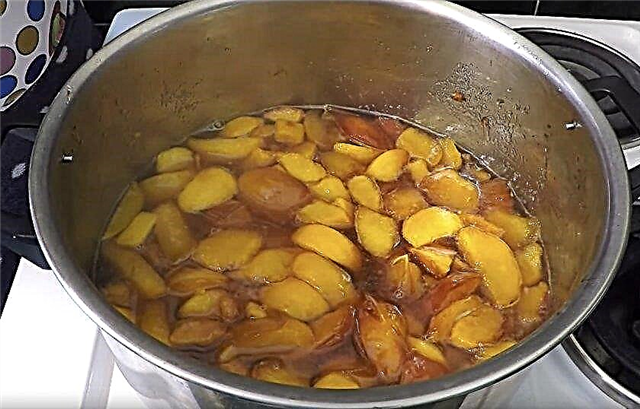 Place jam for the third time, boil, add citric acid. Juice should become clear. Boil for 7 minutes over low heat.
Place jam for the third time, boil, add citric acid. Juice should become clear. Boil for 7 minutes over low heat.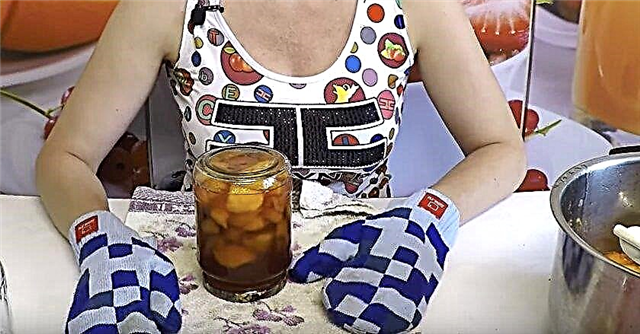 Pour jam into jars. Close eurocaps. Cool the jam by turning the cans over the lids and wrapping them in a towel.
Pour jam into jars. Close eurocaps. Cool the jam by turning the cans over the lids and wrapping them in a towel.
Video recipe
Simple recipe
Important! Be sure to remove the foam when cooking jam.
Another jam option (five minutes).

2 cans of 0.5 l225 min.
Energy value per 100 g:
- Wash the main ingredient, cut, remove the stone and cut into pieces.
- Add sugar and let stand for several hours.
- Put the pan on the stove, boil, stirring regularly.
- Simmer for five minutes.
- Add lemon juice, mix, pour into jars.
- Roll up the cans, turn over and leave to cool.

With apples

2-3 cans of 0.5 l each 300 min.
Energy value per 100 g:
- Wash the fruit thoroughly.
- Place clean fruits on paper towels to dry.
- Cut the peaches along the seam and carefully divide them into halves.
- Remove the bones. If you can’t remove them by hand, use a teaspoon.
- Cut the peach into medium slices.
- Cut the apples into two, remove the core and ponytails.
- Cut apples into slices the same as juicy fruit.
- Put all the resulting pieces in a pan.
- In a different container, boil 0.5 tbsp. filtered water and sprinkle sugar. Stir constantly, mix until sugar is completely dissolved.
- Pour the resulting liquid into a bowl of fruit.
- Leave to stand for 3-4 hours under the lid. After a while, put the pan on medium heat.
- Cook the workpiece for 15 minutes, constantly removing the foam.
- Put slices in jars, pour in syrup.
- Cover the jars with lids and place in a pan with hot water for 10 minutes to sterilize.
- Roll up the cans. Leave them to cool. Tasty jam for the winter is ready. Store the workpiece in the pantry.

Important! You can add lemon and spices to enhance the taste and aroma of jam.
With plums

2-3 cans of 0.5 l. 90 min.
Energy value per 100 g:
- Wash a kilogram of peaches. They must be peeled.
- Cut the fruit into slices, having previously separated the pulp from the seed.
- Wash the plums and oranges, peel and peel them, cut into slices.
- Pour into a pan 2 tbsp. water and add sugar.
- Boil the liquid and add the fruit slices.
- Boil everything over low heat for 40 minutes.
- Pour into sterile jars. Roll up. Leave to cool.

Did you know? In the era of the Roman Empire, it was thought that peach comes from Persia, since its Latin name is “Prunus persica”, that is, “Persian apple”.
With nuts

2 cans 0.5 L130 min.
Energy value per 100 g:
- Wash the fruits, peel and cut into slices.
- Pour the slices with sugar and leave for 60 minutes to make the juice stand out.
- Pour everything into a pot with thick walls and put on a strong fire. Boil it.
- Boil on low heat for half an hour.
- Add peeled and chopped nuts. Boil another quarter hour.
- Pour into jars and roll up the lids.

How to store at home?
How much jam can be stored depends on whether you prepared it with or without pits. Seedless treats can stand for 1-2 years. But it is unlikely that you will be able to keep it for so long. In winter, with a lack of vitamins, this delicate, fragrant dessert will "go away" instantly.
With seeds, the product is stored for only 7-8 months. It is advisable to store jam in a cool room (cellar, pantry) and avoid sudden changes in temperature. Open cans should be refrigerated.
Peach jam is a very tasty product. Such a useful delicacy must necessarily be among the blanks of each hostess, since it contains a large number of useful substances. But you should not get carried away with this sweetness, as it is very high in calories.

 Wash the peaches.
Wash the peaches. To separate the fruit from the skin, pour hot water into a container and immerse the fruits one at a time for several seconds. Then, using a knife, carefully remove the skin.
To separate the fruit from the skin, pour hot water into a container and immerse the fruits one at a time for several seconds. Then, using a knife, carefully remove the skin. Cut the fruit into medium sized slices. Fold in the pan.
Cut the fruit into medium sized slices. Fold in the pan. Pour sugar, mix and leave for 1–1.5 hours.
Pour sugar, mix and leave for 1–1.5 hours. Place the pan over medium heat, add cinnamon and stir the peaches with a wooden spoon. Once the sugar has completely dissolved, boil over high heat.
Place the pan over medium heat, add cinnamon and stir the peaches with a wooden spoon. Once the sugar has completely dissolved, boil over high heat. Leave to cool in a cool place for 30 minutes. Put again on the stove and boil. Cool again.
Leave to cool in a cool place for 30 minutes. Put again on the stove and boil. Cool again. Place jam for the third time, boil, add citric acid. Juice should become clear. Boil for 7 minutes over low heat.
Place jam for the third time, boil, add citric acid. Juice should become clear. Boil for 7 minutes over low heat. Pour jam into jars. Close eurocaps. Cool the jam by turning the cans over the lids and wrapping them in a towel.
Pour jam into jars. Close eurocaps. Cool the jam by turning the cans over the lids and wrapping them in a towel.

